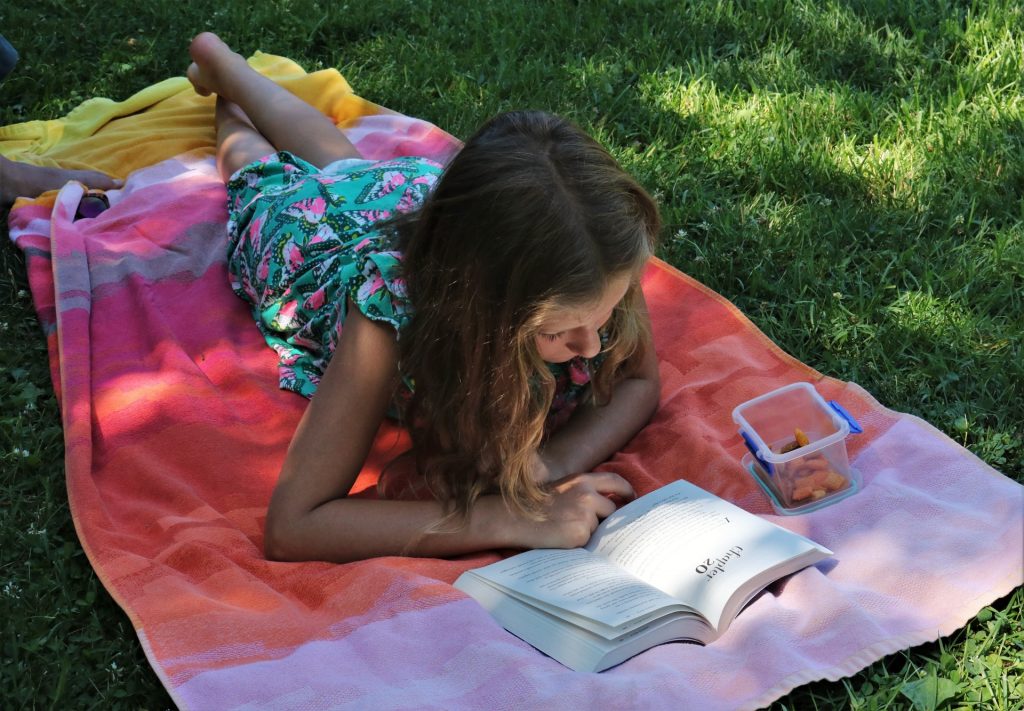
There are many factors to consider in choosing the right turfgrasses for sun and shade on your property. Most properties have a combination of areas with and without shade, even if no trees are present on the lawn. The home itself is often a source of shade in the morning or evening hours.
Keep in mind that no turfgrass will grow in complete shade. If you have an area on your lawn that never receives sunlight, you may be better off leaving it as dirt or using it for another purpose. Otherwise, what follows are a few tips that will help you identify the right turfgrasses based on the condition of your lawn and the sunlight that it receives.
The Downside of Shade
Shade can be great for you and your pets to cool off out of the sun.But for most turfgrasses, shade is not desirable. This is because photosynthesis, the process of converting light to chemical energy, is diminished in grasses when they are in the shade. Photosynthesis builds starches and sugars that help the grass to grow tall, strong, and resilient. The less direct sunlight the grass receives, the weaker the blades will be and the slower it will grow.
A combination of sunlight, water, and nutrients is essential for all types of grass to grow. However, as you may guess, there are turfgrasses for sun and shade that offer different tolerances. When choosing the right turfgrass for your lawn, the one that is best suited for your lawn conditions is the one to choose.
How to Choose the Right Turfgrass
To choose the right turfgrasses for sun and shade, you will need to know your lawn. Observation your lawn over a typical day to see where the sunlight is brightest in the morning, afternoon, and evening. Note where the light stays the longest and where it is not as present.
Also, keep in mind that throughout the year the sun will change its position in the sky. Plus, the days will grow longer during the summer and shorter during the winter. Make your observations around the summer equinox in late June to get a good estimate for much of the growing season.
Different Types of Turfgrasses
Once you better understand the conditions your lawn presents, the next step is choosing from the turfgrasses for sun and shade.
Bermuda Grass
Bermuda grass is one of the most popular varieties. But it also has the highest requirement for light. Of all the standard turfgrasses available, Bermuda grass is tailor-made for lawns with few, if any, trees and plenty of sunshine. It requires the most amount of sunlight of all the popular versions of turfgrasses, so be sure your lawn meets the requirements.
However, for the environmental conditions in the Southeast, Bermuda grass is highly desirable. Even if you have some shade, new types of Bermuda grass are now available that are more resilient in lower-light conditions. This means that you get all the benefits that Bermuda grass has to offer. Superior durability, fast-growth, and traffic resistance make Bermuda grass varieties like TifTuf™ and TufGrand® Bermuda grass solid choices.
St. Augustine Grass
St. Augustine turfgrass is on the opposite end of the spectrum from Bermuda grass. It is shade tolerant and only requires only about four hours of direct sunlight each day to stay healthy. If the sunlight is only partially filtered in the shade, it can grow with even less direct sunlight.
![The Best Turfgrasses for Sun and Shade [infographic]](https://theturfgrassgroup.com/wp-content/uploads/2021/02/The-Best-Turfgrasses-for-Sun-and-Shade-infographic-1.jpg)
Then, there are the turfgrasses found between Bermuda grass and St. Augustine grass. They are, in order of most to least sunlight requirements:
- Carpet grass
- Bahia grass
- Zoysia grass
- Centipede grass
- Kentucky bluegrass
- Tall fescue
- Red fescue
Buffalo grass is the poorest of all turfgrasses in terms of shade tolerance. However, it is not widely available, and it tends to grow only in areas with few, if any shady spots.
How to Maintain Your Turfgrass
Once you select the right turfgrass for the sun and shade conditions in your yard, the next step is proper maintenance. If some of the areas in the shade are looking thin, here is what you can do to improve the situation.
Cut the Shaded Grass at a Higher Level
After mowing the parts of the lawn that receive direct sunlight, raise the mower about ½” for the shaded grass. This will allow the turf to grow broader leaves that capture additional light and helps the grass to stay healthier.
Add a Little Nitrogen
Nitrogen is one of the essential elements needed for turfgrasses to grow strong and healthy. Grass that grows mostly in the shade requires a little more nitrogen than grass under constant sunlight, though not a lot more. It may sound counterintuitive, but if you add too much nitrogen you will weaken the roots. So just add a little more nitrogen to the shaded turfgrass so that it grows properly.
Reduced Water Requirement
The evaporation rate in the shade is lower than in direct sunlight. Cut back on the irrigation for shaded grass—unless it is growing under a tree. Tree roots sap away much of the water, so if your grass is near a tree, keep watering at the same level as the turf in direct sunshine.
It also helps to reduce foot traffic in shaded areas as much as possible. The less impact damage it has to repair, the more energy the grass will use to stay healthy and strong in the shade.
Understanding the environment of your lawn will help you choose the best turfgrasses for sun and shade. Check out our grass variety pages to get more information about what type of turfgrass is right for your property.
